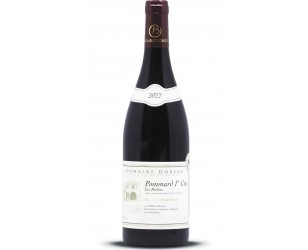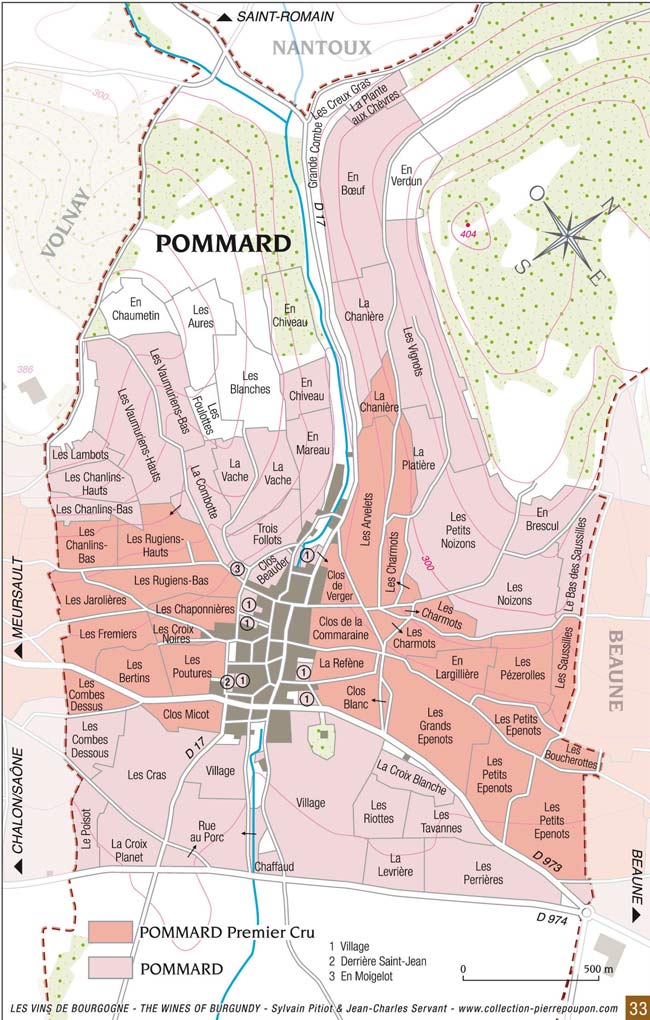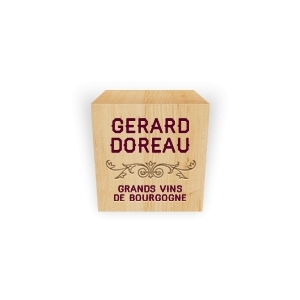
Pommard Premier Cru 2022 - "Les Bertins"
- Red
- 75 cl
Pommard Premier Cru "Les Bertins" from the very successful 2022 vintage.
Fresh and intense, with present but delicate tannins, of a very great aromatic intensity.


Pommard Premier Cru "Les Bertins" from the very successful 2022 vintage.
Fresh and intense, with present but delicate tannins, of a very great aromatic intensity.
Pommard Premier Cru 2022 - "Les Bertins"
Complex
Powerful
Mineral
Fruity
Woody
The "Les Bertins" plot is located in the south-west of the Pommard Premiers Crus appellation areas.
From the very successful 2022 vintage, it offers power, richness and aromatic intensity.
With aromas of red and black fruits, this Pommard brings a complexity worthy of the greatest red wines of Burgundy. Its aromas may evolve towards more animal notes as it ages (leather, game).
Round and opulent, long in the mouth, it is very representative of the wines of the appellation: structured and powerful, it can accompany a very wide range of dishes, grilled meats or meats in sauce in particular, but also furry game.
Its colour is deep red, dark ruby purple. Aromas of blackberry, blueberry or violet, cherry stone, ripe plum. Maturity directs him towards leather, chocolate and pepper. A wine to be left to age a little so that it opens up fully: round texture, delicate and assertive structure, fruity in the mouth, the tannic chewiness then taking on their roundness.
It goes well with furry and feathered game, braised or roasted, beef steaks, lamb or stewed poultry.
Map of the vines of the Pommard appellation:

Red wine of tannic Burgundy - Corsé: grilled or roasted pork, steaks or ribs of beef, cobblestones and beef steaks, braised beef in sauce, furry game, couscous and tagines, Epoisse
Appellation
Premier CruType of Wine
StillWine Making
Oak casksGrape Variety
Pinot NoirHarvest
ManualBurgundy Region
Côte de BeauneVintage
2022Service
14 to 16 degreesCustody potential
2029
Beware of preconceived notions! The fame of Pommard in the 19th century earned it the image of a wine that is both forceful and virile. In reality, time, terroir and methods of vinification have all combined to create a more subtle reality, a wine that is both richer and more sensitive. Its colour is the deep, dark red with mauve highlights which caused Victor Hugo to speak of it as “night in combat with day”. Its aromas are redolent of blackberry, bilberry, or gooseberry, cherry pit and ripe plum. Often, wild and feline notes develop with age. At full maturity, it tends towards leather, chocolate and pepper.
It needs to be given time to open up to its fullest extent and to display its mouth-filling texture, its firm but delicate structure, its fruit-filled mouth, and its chewy tannins, which by then will be properly smoothed down. A “rich” wine ? Certainly.
This illustrious representative of the Côte de Beaune with its dense and massive tannins revels in furred or feathered game, braised or roasted, which will find in Pommard (and especially in the Premiers Crus) an invaluable collaborator. Thick cut beefsteak, lamb, or stewed poultry will respond to its firm-textured tannins and concentrated aromas. It is a natural partner for cheeses with well-developed flavours: Époisses, Langres and Soumaintrain, but also Comté.
Serving temperature: 14 to 16°C.
For centuries Pommard has been considered the typical Bourgogne: deep red in colour, powerfully aromatic, solid and trustworthy. The very name Pommard has a generous ring to it and fills the mouth as it fills the glass. Pommard with its smiling vineyards lies between Beaune and Volnay where the Côte de
Beaune makes a slight turn towards Autun. These lands formerly belonged to the Dukes of Bourgogne, to religious houses including the abbey of Cîteaux, or to old families such as the Marey-Monge family. As early as the Middle Ages, Pommard was thought of as the flower of Bourgogne wines - the wine to which all others were compared. The appellation, one of the first AOC to be so designated (1936), grows only red wines from the Pinot Noir grape.
On the lower ground the soil is ancient alluvium. Mid-slope, the clay-limestone soils are well drained thanks to the inclusion of rock debris. Higher still are Jurassic (Oxfordian) marls, brown calcic soils, and brown limestone soils. In places, the soil is reddened by the presence of iron. Exposure: south or east.
Altitudes: 250 to 330 metres.
Source : https://www.bourgogne-wines.com
Domaine Doreau in Monthélie. Domaine Doreau offers for sale Monthélie appellation wines.
Winemaker from father to son since the end of the 19th century, we produce authentic terroir wines by cultivating noble grape varieties on a surface of 6 hectares.
Pinot Noir for the Monthelie, Monthelie 1er Cru, Pommard. Chardonnay for the Monthelie, Meursault, Saint-Romain, Burgundy Chardonnay. Aligoté for Burgundy Aligoté.
The methods of cultivation and winemaking are traditional. The vines are plowed, the natural fertilization, the grass contours and the reasoned treatments.
The harvest is done manually. The grapes are sorted and destemmed for about ten days. The fermentation is done naturally (without yeasting). The aging in oak barrels (10% new) lasts 12 to 15 months.
The bottling is done after collage and unification.
